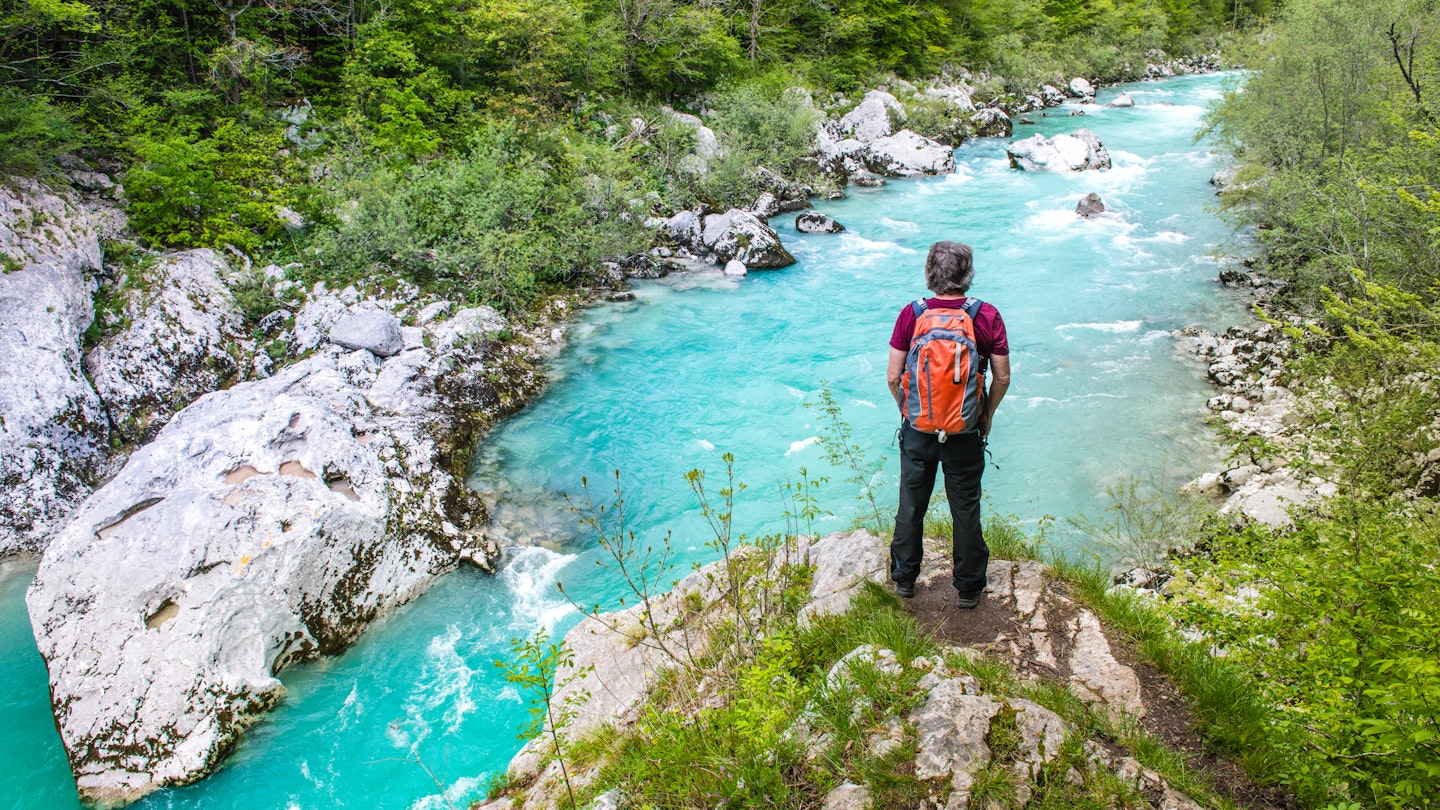Filling Slovenia’s Julian Alps-stuffed northwest corner, Triglav National Park (TNP) is more than just the country’s largest swatch of protected land – it’s the mythical heart of a nation regularly called the world’s most sustainable destination.
Anchored by Mt Triglav, the country’s tallest peak, the 840-sq-km (324-sq-mile) park is loaded with history, crisscrossed by rivers and streams, freckled with high-mountain lakes, and connected by hiking and cycling routes.
Although TNP is Slovenia’s only national park, much of the country feels like a preserved zone—more than 60% of its surface is forested, the third-highest percentage in Europe. Slovenia is known for its green spaces and eco-friendly practices, making it an ideal destination for nature lovers.
Climbers of All Skill Levels Can Summit Mt Triglav
According to lore, one isn’t a true Slovene until they’ve summited the 2864m (9396ft) Mt Triglav (triglav means three heads). There are routes available for nearly any skill level, from climbers and hikers to mixed mountaineers, providing breathtaking views of the Julian Alps and a 360-degree panorama of the incredible park below.
For a challenging route, start in the Vrata Valley. The push here begins from the 1015m (3330ft) Aljažev Dom hut, due north of the mountain, and heads up the mythical north face. A significantly easier path takes you from Rudno Polje on the Pokljuka Plateau and along the Pokljuka Route from the south.
Regardless of the trail you choose, take care to monitor the weather conditions and carry the necessary equipment: sturdy boots, helmet, harness for ropes or via ferrata, sunscreen, water, hat, foul-weather gear, and snacks for energy.

Discover Slovenian Culture and History in TNP
TNP is not only for thrill-seekers; there are numerous non-mountaineering activities and low-adrenaline spots in this northwest corner of Slovenia. A simple walk in the woods will lead you to the iconic 78m (256ft) Savica Waterfall near Lake Bohinj, a massive body of tectonic-glacial water.
From the waterfall, you’re within strolling distance of the Alpine Dairy Farming Museum in Stara Fužina and the historic Church of St John the Baptist. In the town of Trenta, don’t miss the chance to visit the source of the Soča River and cross the Vršič Pass, where 50 serpentine turns provide ample photo opportunities across some of the grandest peaks in southeastern Europe.

TNP Offers Trails for All Hikers
The park features an abundance of trails suitable for both day hikers and long-distance trekkers, like the Triglavska Bistrica Trail, which connects to the northern Vrata Valley. TNP is also the starting point for some of Slovenia’s best through-hikes, making it a hub for long-distance hiking enthusiasts.
The nation’s longest path, the Slovenian Mountain Trail at 616km (383 miles), passes through TNP before continuing south to the Adriatic. Another notable hike is the 270km (168-mile) Juliana Trail, which takes more than two weeks to fully circumnavigate. Additionally, the Walk of Peace trails and Via Alpina are prominent routes featuring rich historical contexts as well as stunning views.

Cycling in TNP: Sustainable and Convenient
One of the most rewarding aspects of Slovenia is that cycling is not just possible but actively encouraged, particularly in TNP. Within the park, the Radovna Cycle Route follows the Radovna River for about 10 miles, making it ideal for leisurely cycling.
For more adventurous riders, the Trans Slovenia cycling trail starts in the far north, crossing the Vršič Pass while pedaling south, later joining the Trans Dinarica trail that takes you into the Western Balkans.
Getting to and Exploring TNP
Traveling to Triglav National Park is straightforward. It’s just an hour’s drive from Ljubljana via Hwy E61 toward Kranj and Bled, and a bus ride takes approximately two hours. Once in TNP, make use of the park’s public transportation options to get around, promoting sustainable travel.
Various accommodations are available within the park, including apartments and mountain huts, making it easy to connect with fellow outdoor enthusiasts. Larger towns such as Bohinjska Bistrica offer more traditional accommodations, ensuring a comfortable stay amidst nature.





